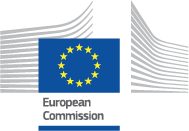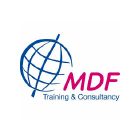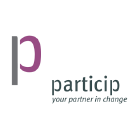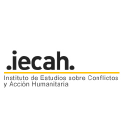The Final Narrative Report has to be prepared on the basis of the Single Form and it aims to provide an overview of the implementation of the Action
The Narrative Report should enable ECHO to assess the level of achievement of the objectives and results envisaged in the proposal, while taking account any modifications presented in the Single Form.
The Narrative Report will also explain how the resources have been mobilized, the challenges and difficulties encountered during the implementation of the action and any other additional information that may help ECHO to understand better the performance.
Specifically, this document shall also include an overview of the control measures carried out on Sub-delegatees, if any, and in case weaknesses are detected, the partner should inform on their nature and extent as well as corrective measures adopted.
Section 1: General information
1.3.2 Narrative Summary.
The narrative summary will summarise the achievements of the Action.
1.4.2 Area of Intervention.
This section is optional at the final report stage if no changes occurred. The partner has to provide information on the locations which have changed and explain the rationale behind the changes.
Section 2: HUMANITARIAN ORGANISATION IN THE AREA
2.3 [FIN] Report on synergies with other actions: Report here only when the situation described in the proposal has drastically changed.
SECTION 3: NEEDS ASSESSMENT AND BENEFICIARIES
3.1.7 Report on needs assessment
The Partner has to provide, as necessary, an update of the Sections 3.1. The partner will also report on major changes and specific difficulties encountered in relation to the initial assessment.
3.2.1.1 Estimated disaggregated data about direct beneficiaries:
In the final report, the partner must provide disaggregated data.
3.2.2.1 Estimated disaggregated data about direct beneficiaries
The Partner has to provide updated estimates.
3.2.3.2 Specific target:
The partner must provide an update in case the target of the Action has changed during implementation.
3.2.8 Report on beneficiaries:
The partner will report on the beneficiary sections and on the involvement of the beneficiaries in the implementation and evaluation the Action. Partner should not forget to report on major difficulties, challenges with the partners and affected populations.
SECTION 4: LOGIC OF INTERVENTION
4.1 PRINCIPAL OBJECTIVE
4.2.3 Indicators: Achieved value: At the final report stage, the partner will provide the achieved value for each indicator.
4.2 Report on Specific objective: The partner will report on the level of achievement of the Specific objective providing additional information and context that the indicators might not have been able to capture.
4.3 RESULTS
Estimated total amount:
At the final report, the partner will provide an estimation of the amount spent to achieve the result.
4.3.1.1 Actual number of direct beneficiaries reached
In the final report, the partner will provide the number of the Action’s actual beneficiaries.
4.3.6 Report on beneficiaries:
The partner will report on the details of beneficiaries for each result.
- Transfer modalities Remember also to provide at FR level relevant information on post distribution monitoring (PDM).
- Indicators: Achieved value: In the final report, the partner will update the value and provide the value actually achieved.
- Indicators: Source of verification:
- In the final report, the partner will update the SoV or comments on the SoV
- Report on indicators:
- In this section, the partner will provide a comprehensive report on the level of achievement of the result and how this achievement was verified and/or measured by the indicators. When the indicators are no longer verifiable and measurable, explain how the achievement of the result can be measured.
- Final report on the activity
- Conclusion on the result:
- The partner will present its conclusions on the achievement of the result and the main challenges encountered.
4.9 REPORT ON PRECONDITIONS, ASSUMPTIONS AND RISKS
In the final report, the partner will explain whether the preconditions were met, whether any risks materialised and how it reacted to secure the success of the Action.
Section 5: Quality Markers
5.1.4 Report on Gender-Age Markers
The partner will report in case of changes in the markers and comments provided in section 5.1.1 and 5.1.2. Information on improvements and setbacks in efforts to integrate gender and age will also be reported.
5.2.4 Report on Resilience Markers
The partner will report in case of changes in the markers and comments provided in section 5.2.1 and 5.2.2 Information on improvements and setbacks in efforts to integrate resilience will also be reported.
Section 6: Implementation
6.1.2 Report – Human resources and management capacities
The partner will report at the final report stage on the issues mentioned in sections 6.1 and 6.1.1. It will provide explanations in cases where the Management of Human Resources has had a negative effect on the implementation of the Action.
6.2.1 Did you deploy EU Aid Volunteers in the framework of this Action?
If the partner clicked on “Yes” or “Do not know yet” at the proposal stage, it will either confirm with “Yes” or respectively with “No”.
6.3.3 Equipment and goods
In the final report, the partner will report on the issues mentioned in sections 6.3. It will provide explanations in case the purchase of equipment and goods has had a negative effect on the implementation of the Action. In case of remaining items at the end of the Action, the partner will provide annexes explaining the end use of the remaining supplies. The partner will consult the guidelines on final report for more information.
6.4.1 Use of HPCs
At the final report stage, the partner has the possibility to update the answer provided in 6.4 and to give the name of the HPC used for the procurement
6.4.3 Report on supplies
6.6.2 Report on security
In the final report, the partner will report on section 6.6 only in cases where the section was initially filled in.
6.7.2.1 Implementing Partner added value
In the final report, the partner will explain in general terms how the Implementing partners contributed to the achievement of the objective.
6.7.4.1 Coordination, supervision and controls
The partner will report on the mechanisms described above and explain, when relevant, the difficulties encountered.
General update on implementing partner list
In the final report, the partner will provide a thorough report on the role and activities implemented by each implementing partner.
SECTION 7: COORDINATION
7.6 Report on field coordination
In the final report, the partner will report on the relevant and significant changes and/or problems in relation to the coordination sections above.
SECTION 8: MONITORING AND EVALUATION
8.5 Report on Monitoring and evaluation
In the final report, the partner will explain how the monitoring has been carried out and the main challenges encountered. It will report also on the evaluations carried out and their conclusions. Remember to annex copies of the evaluations/audits financed by ECHO funding.
SECTION 9: COMMUNICATION, VISIBILITY AND INFORMATION
9.4 Report on challenges and progress
For standard visibility, the partner will explain what type of activities have been implemented and where, corresponding to the indications in the proposal. Evidence of those activities needs to be provided (pictures, articles, etc.). The partner can insert a link where such proofs can be found (link to website, web post, etc.). In case the minimum requirements could not be achieved, the partner must provide a good justification.
In case of above standard activities, the partner will have to report according to the separate communication plan that has been described in section 9.2.
The amount of supporting evidence provided does not need to be exhaustive. The partner must able to demonstrate in a credible way that the contractual visibility and communication obligation has been respected as an integral part of the project and at different stages of its implementation.
Communication and visibility costs cannot be approved without this supporting information.
SECTION 10: FINANCIAL OVERVIEW OF THE ACTION
10.1 Final report incurred costs
Partner has to include in this table the total incurred costs
10.2 Financial Statements:
In the final report, the partners will update the financial statement. The allocation per result (%) should not be updated at final report stage.
10.3 Funding of the Action
In this section the Partner has to provide a picture of the various sources of financing. In case the Action itself has created an income, the final amount has to be mentioned in the section Direct Revenue of the Action; at final payment stage this amount will be deducted from DG ECHO contribution.
If the Partner made a contribution to a certain portion / percentage of the costs of the Action, the final amount has to be mentioned on the field Contribution by Applicant, while funding received by other donors has to be included in Contribution by other donors.
Moreover the Partner has to fill in the field for the Contribution requested from DG ECHO, while the Percentage of total funding is calculated automatically by the system.
Contributions by beneficiaries are usually linked to cost recovery schemes. These contributions cannot be accepted as co-financing. At final reporting stage the Partner must identify the amounts recovered in this section. They are not taken into account for the calculation of the indirect costs as the objective of the amount recovered is to be reinvested in the Action.
10.8 The organisation confirms that the co-financing has not led to a double funding of the activity:
The partner will confirm at the final report stage that the various sources of funding do not lead to double-funding.
10.9 Report on financial issues:
When necessary, the partner will report here on any of the sections above.
SECTION 13: CONCLUSIONS AND COMMENTS
13.3 Conclusions
the partner may add here information which will help to better understand the achievement of the Action. It can also, if not covered in other sections of the Single Form, explain specific difficulties faced during the implementation and the conclusions drawn from that experience. The partner can also share recommendations.
13.4 Lessons learned
Optionally, the partner can share the lessons learned from the implementation of the Action, or its views on future projects.





